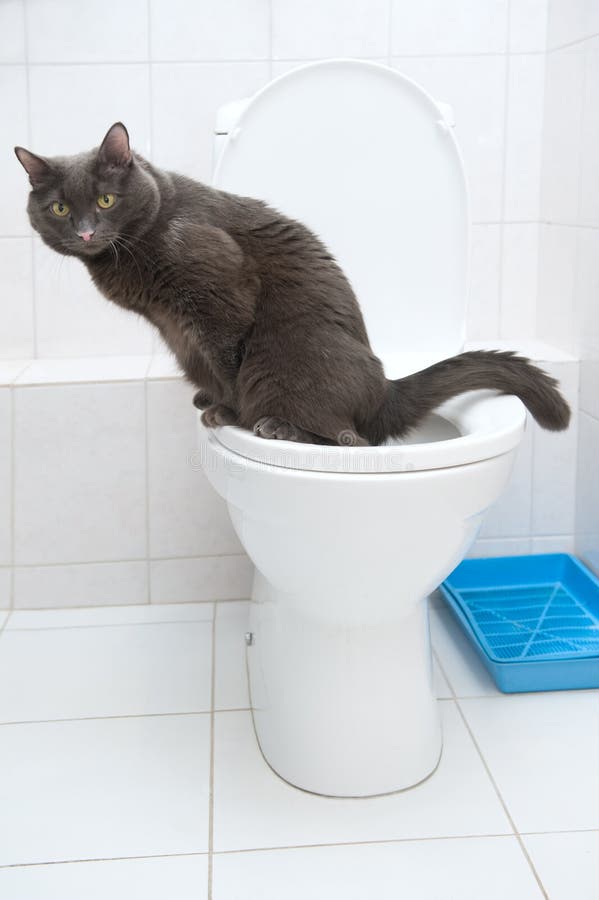Every person has got their own perception involving Can You Flush Cat Poo or Litter Down the Toilet?.

Intro
As feline proprietors, it's vital to bear in mind just how we dispose of our feline buddies' waste. While it may seem convenient to flush pet cat poop down the commode, this technique can have damaging repercussions for both the atmosphere and human health.
Alternatives to Flushing
Fortunately, there are safer and more accountable methods to deal with pet cat poop. Take into consideration the complying with choices:
1. Scoop and Dispose in Trash
One of the most common technique of throwing away cat poop is to scoop it into a naturally degradable bag and toss it in the trash. Make sure to utilize a committed trash scoop and dispose of the waste without delay.
2. Usage Biodegradable Litter
Select biodegradable cat trash made from materials such as corn or wheat. These litters are environmentally friendly and can be safely taken care of in the trash.
3. Bury in the Yard
If you have a lawn, consider burying feline waste in a marked location away from veggie yards and water sources. Be sure to dig deep adequate to prevent contamination of groundwater.
4. Set Up a Pet Waste Disposal System
Invest in an animal garbage disposal system particularly made for pet cat waste. These systems utilize enzymes to break down the waste, decreasing odor and ecological impact.
Health Risks
Along with ecological worries, purging pet cat waste can also present wellness threats to human beings. Pet cat feces might consist of Toxoplasma gondii, a bloodsucker that can create toxoplasmosis-- a possibly extreme ailment, specifically for expectant females and people with weakened body immune systems.
Environmental Impact
Flushing pet cat poop introduces hazardous microorganisms and bloodsuckers right into the water, presenting a considerable danger to aquatic environments. These contaminants can negatively impact aquatic life and compromise water high quality.
Conclusion
Accountable pet dog ownership prolongs past providing food and shelter-- it additionally involves appropriate waste administration. By avoiding purging pet cat poop down the toilet and choosing alternate disposal techniques, we can lessen our ecological footprint and safeguard human health.
Why Can’t I Flush Cat Poop?
It Spreads a Parasite
Cats are frequently infected with a parasite called toxoplasma gondii. The parasite causes an infection called toxoplasmosis. It is usually harmless to cats. The parasite only uses cat poop as a host for its eggs. Otherwise, the cat’s immune system usually keeps the infection at low enough levels to maintain its own health. But it does not stop the develop of eggs. These eggs are tiny and surprisingly tough. They may survive for a year before they begin to grow. But that’s the problem.
Our wastewater system is not designed to deal with toxoplasmosis eggs. Instead, most eggs will flush from your toilet into sewers and wastewater management plants. After the sewage is treated for many other harmful things in it, it is typically released into local rivers, lakes, or oceans. Here, the toxoplasmosis eggs can find new hosts, including starfish, crabs, otters, and many other wildlife. For many, this is a significant risk to their health. Toxoplasmosis can also end up infecting water sources that are important for agriculture, which means our deer, pigs, and sheep can get infected too.
Is There Risk to Humans?
There can be a risk to human life from flushing cat poop down the toilet. If you do so, the parasites from your cat’s poop can end up in shellfish, game animals, or livestock. If this meat is then served raw or undercooked, the people who eat it can get sick.
In fact, according to the CDC, 40 million people in the United States are infected with toxoplasma gondii. They get it from exposure to infected seafood, or from some kind of cat poop contamination, like drinking from a stream that is contaminated or touching anything that has come into contact with cat poop. That includes just cleaning a cat litter box.
Most people who get infected with these parasites will not develop any symptoms. However, for pregnant women or for those with compromised immune systems, the parasite can cause severe health problems.
How to Handle Cat Poop
The best way to handle cat poop is actually to clean the box more often. The eggs that the parasite sheds will not become active until one to five days after the cat poops. That means that if you clean daily, you’re much less likely to come into direct contact with infectious eggs.
That said, always dispose of cat poop in the garbage and not down the toilet. Wash your hands before and after you clean the litter box, and bring the bag of poop right outside to your garbage bins.
https://trenchlesssolutionsusa.com/why-cant-i-flush-cat-poop/

I'm very fascinated with Can You Flush Cat Poo or Litter Down the Toilet? and I'm hoping you enjoyed the new blog posting. Be sure to take the time to distribute this post if you enjoyed it. Thanks for your time. Visit us again soon.
Get Offer